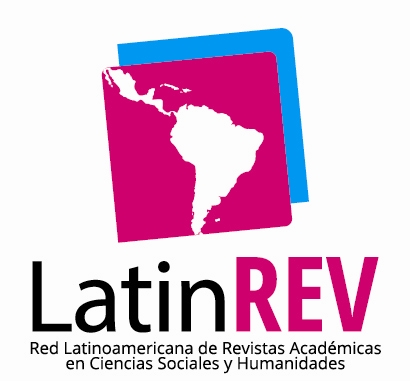Informática de materiales en el estudio de propiedades físicas de nanotubos de carbono
DOI:
https://doi.org/10.5281/zenodo.14193613Palabras clave:
Aprendizaje automático, inteligencia artificial, nanotecnología, nanoestructuras base carbonoResumen
La informática de materiales (IM) constituye un nuevo paradigma en el estudio de nanomateriales, donde enfoques de aprendizaje automático (AA) se implementan en la nanotecnología. La IM es una poderosa herramienta en el estudio de nanotubos de carbono (NTC), los cuales poseen propiedades físicas excepcionales, llevándolos a ser utilizados en óptica, química, informática y medicina, entre otras áreas. Este trabajo describe las investigaciones más recientes en IM aplicado a los NTC. Se explican detalladamente los algoritmos de AA utilizados en el estudio de NTC, tales como redes neuronales artificiales, árboles de decisión y máquinas de vectores de soporte. Asimismo, se exponen los estudios donde enfoques de simulación computacional han sido útiles para desarrollar modelos predictivos de propiedades y comportamientos de NTC. Se identifican preguntas de investigación abiertas en el análisis de propiedades físicas como la conductividad térmica y los modos vibratorios de NTC, donde la IM podría apoyar para su mayor comprensión, ayudando en el desarrollo de nanosensores. Finalmente, la IM puede ayudar en reducir costos de tiempo y recursos en la caracterización de propiedades físicas de nanomateriales.
Citas
Abad, S. N. K., Ganjeh, E., Zolriasatein, A., Shabani-Nia, F., & Siadati, M. H. (2017). Predicting carbon nanotube diameter using artificial neural network along with characterization and field emission measurement. Iranian Journal of Science and Technology, Transaction A: Science, 41(1), 151–163. https://doi.org/10.1007/s40995-017-0198-9
Acı, M., & Avcı, M. (2016). Artificial neural network approach for atomic coordinate prediction of carbon nanotubes. Applied Physics A: Materials Science and Processing, 122(7). https://doi.org/10.1007/s00339-016-0153-1
Afrand, M., Ahmadi Nadooshan, A., Hassani, M., Yarmand, H., & Dahari, M. (2016). Predicting the viscosity of multi-walled carbon nanotubes/water nanofluid by developing an optimal artificial neural network based on experimental data. International Communications in Heat and Mass Transfer, 77, 49–53. https://doi.org/10.1016/j.icheatmasstransfer.2016.07.008
Aggarwal, C. C. (2015). Data mining: The textbook. In Springer (Vol. 1, Issue 3). Springer US. https://doi.org/10.1007/978-3-319-14142-8
Aggarwal, C. C. (2018). Neural Networks and Deep Learning. In Neural Networks and Deep Learning. https://doi.org/10.1007/978-3-319-94463-0
Agrawal, A., & Choudhary, A. (2016). Perspective: Materials informatics and big data: Realization of the “fourth paradigm” of science in materials science. APL Materials, 4(5), 1–10. https://doi.org/10.1063/1.4946894
Ahmadi Azqhandi, M. H., Ghaedi, M., Yousefi, F., & Jamshidi, M. (2017). Application of random forest, radial basis function neural networks and central composite design for modeling and/or optimization of the ultrasonic assisted adsorption of brilliant green on ZnS-NP-AC. Journal of Colloid and Interface Science, 505, 278–292. https://doi.org/10.1016/j.jcis.2017.05.098
Ajori, S., Parsapour, H., & Ansari, R. (2018). Vibrational analysis of single-walled carbon nanotubes filled with gold nanowires using MD simulations. Physica E: Low-Dimensional Systems and Nanostructures, 104(April), 327–332. https://doi.org/10.1016/j.physe.2018.08.005
Baghban, A., Kahani, M., Nazari, M. A., Ahmadi, M. H., & Yan, W. M. (2019). Sensitivity analysis and application of machine learning methods to predict the heat transfer performance of CNT/water nanofluid flows through coils. International Journal of Heat and Mass Transfer, 128, 825–835. https://doi.org/10.1016/j.ijheatmasstransfer.2018.09.041
Bian, L., Wang, Z., White, D. L., & Star, A. (2021). Machine learning-assisted calibration of Hg2+ sensors based on carbon nanotube field-effect transistors. Biosensors and Bioelectronics, 180(February), 113085. https://doi.org/10.1016/j.bios.2021.113085
Cheng, Y., Wang, T., & Gang, Z. (2021). Artificial intelligence for materials science. In Springer (1st ed., Vol. 1, Issue 1). https://doi.org/https://doi.org/10.1007/978-3-030-68310-8
Cleophas, T. J., & Zwinderman, A. H. (2020). Machine learning in medicine - a complete overview. In Machine Learning in Medicine - A Complete Overview. https://doi.org/10.1007/978-3-030-33970-8
Farahbakhsh, J., Delnavaz, M., & Vatanpour, V. (2019). Simulation and characterization of novel reverse osmosis membrane prepared by blending polypyrrole coated multiwalled carbon nanotubes for brackish water desalination and antifouling properties using artificial neural networks. Journal of Membrane Science, 123–138. https://doi.org/10.1016/j.memsci.2019.03.050
Förster, G. D., Castan, A., Loiseau, A., Nelayah, J., Alloyeau, D., Fossard, F., Bichara, C., & Amara, H. (2020). A deep learning approach for determining the chiral indices of carbon nanotubes from high-resolution transmission electron microscopy images. Carbon, 169, 465–474. https://doi.org/10.1016/j.carbon.2020.06.086
Hart, G. L. W., Mueller, T., Toher, C., & Curtarolo, S. (2021). Machine learning for alloys. Nature Reviews Materials, 6(8), 730–755. https://doi.org/10.1038/s41578-021-00340-w
Hastie, T., Tibshirani, R., & Friedman, J. (2009). The Elements of Statistical Learning Data mining, Inference and Prediction. In Springer (2nd ed.). Springer-Verlag New York. https://doi.org/10.1007/978-0-387-84858-7
Husch, T., Sun, J., Cheng, L., Lee, S. J. R., & Miller, T. F. (2021). Improved accuracy and transferability of molecular-orbital-based machine learning: Organics, transition-metal complexes, non-covalent interactions, and transition states. Journal of Chemical Physics, 154(6). https://doi.org/10.1063/5.0032362
Isayev, O., Tropsha, A., & Curtarolo, S. (2019). Materials informatics: Methods, tools and applications. In O. Isayev, A. Tropsha, & S. Curtarolo (Eds.), Wiley-VCH (Vol. 1). Wiley-VCH. https://doi.org/10.1002/9783527802265
Jiang, J., & Wang, L. (2017). Timoshenko beam model for vibrational analysis of double-walled carbon nanotubes bridged on substrate. Current Applied Physics, 17(12), 1670–1690. https://doi.org/10.1016/j.cap.2017.09.007
Kajendirarajah, U., Olivia Avilés, M., & Lagugné-Labarthet, F. (2020). Deciphering tip-enhanced Raman imaging of carbon nanotubes with deep learning neural networks. Physical Chemistry Chemical Physics, 22(32), 17857–17866. https://doi.org/10.1039/D0CP02950E
Karimipour, A., Bagherzadeh, S. A., Taghipour, A., Abdollahi, A., & Safaei, M. R. (2019). A novel nonlinear regression model of SVR as a substitute for ANN to predict conductivity of MWCNT-CuO/water hybrid nanofluid based on empirical data. Physica A: Statistical Mechanics and Its Applications, 521, 89–97. https://doi.org/10.1016/j.physa.2019.01.055
Lin, C. L., & Fan, C. L. (2019). Evaluation of CART, CHAID, and QUEST algorithms: a case study of construction defects in Taiwan. Journal of Asian Architecture and Building Engineering, 18(6), 539–553. https://doi.org/10.1080/13467581.2019.1696203
Matos, M. A. S., Pinho, S. T., & Tagarielli, V. L. (2019). Predictions of the electrical conductivity of composites of polymers and carbon nanotubes by an artificial neural network. Scripta Materialia, 166, 117–121. https://doi.org/10.1016/j.scriptamat.2019.03.003
Mendoza-Cachú, D., López-Miranda, J. L., Mercado-Zúñiga, C., & Rosas, G. (2018). Functionalization of MWCNTs with Ag-AuNPs by a green method and their catalytic properties. Diamond and Related Materials, 84, 26–31. https://doi.org/10.1016/j.diamond.2018.03.004
Nasruddin, Lestari, M., Supriyadi, & Sholahudin. (2018). Optimization Study of Hydrogen Gas Adsorption on Zig-zag Single-walled Carbon Nanotubes: The Artificial Neural Network Analysis. IOP Conference Series: Materials Science and Engineering, 333(1). https://doi.org/10.1088/1757-899X/333/1/012031
Ni, D., Wu, W., Guo, Y., Gong, S., & Wang, Q. (2021). Identifying key parameters for predicting materials with low defect generation efficiency by machine learning. Computational Materials Science, 191(February), 110306. https://doi.org/10.1016/j.commatsci.2021.110306
Pedro, D. (2012). A Few Useful Things to Know About Machine Learning. Communications of the ACM, 55(10), 9–48. https://doi.org/10.1145/2347736.2347755
Poltavsky, I., & Tkatchenko, A. (2021). Machine Learning Force Fields: Recent Advances and Remaining Challenges. Journal of Physical Chemistry Letters, 12(28), 6551–6564. https://doi.org/10.1021/acs.jpclett.1c01204
Rajan, K. (2013). Materials Informatics: An Introduction. In Informatics for Materials Science and Engineering: Data-Driven Discovery for Accelerated Experimentation and Application (pp. 1–16). Elsevier Inc. https://doi.org/10.1016/B978-0-12-394399-6.00001-1
Scarisoreanu, M., Ilie, A., Dutu, E., Badoi, A., Dumitrache, F., Tanasa, E., Mihailescu, C. N., & Mihailescu, I. (2019). Direct nanocrystallite size investigation in microstrained mixed phase TiO 2 nanoparticles by PCA of Raman spectra. Applied Surface Science, 470(June 2018), 507–519. https://doi.org/10.1016/j.apsusc.2018.11.122
Sharma, S., Tiwari, S. K., & Shakya, S. (2020). Mechanical properties and thermal conductivity of pristine and functionalized carbon nanotube reinforced metallic glass composites: A molecular dynamics approach. Defence Technology, xxxx. https://doi.org/10.1016/j.dt.2020.04.004
Takdastan, A., Samarbaf, S., Tahmasebi, Y., Alavi, N., & Babaei, A. A. (2019). Alkali modified oak waste residues as a cost-effective adsorbent for enhanced removal of cadmium from water: Isotherm, kinetic, thermodynamic and artificial neural network modeling. Journal of Industrial and Engineering Chemistry, 78, 352–363. https://doi.org/10.1016/j.jiec.2019.05.034
Unke, O. T., Chmiela, S., Sauceda, H. E., Gastegger, M., Poltavsky, I., Schütt, K. T., Tkatchenko, A., & Müller, K. R. (2021). Machine Learning Force Fields. Chemical Reviews. https://doi.org/10.1021/acs.chemrev.0c01111
Volder, M. F. L., Tawfick, H. S., Baughman, R. H., & Hart, A. J. (2013). Carbon Nanotubes: Present and Future duction, CNT powders have already been incorpo- rated inmany commercial applications and are now Commercial Applications. Science, 339(6119), 535–539. https://doi.org/10.1126/science.1222453
Wu, B., Han, S., Shin, K. G., & Lu, W. (2018). Application of artificial neural networks in design of lithium-ion batteries. Journal of Power Sources, 395(April), 128–136. https://doi.org/10.1016/j.jpowsour.2018.05.040
Xia, W., Hou, Z., Tang, J., Li, J., Chaikittisilp, W., Kim, Y., Muraoka, K., Zhang, H., He, J., Han, B., & Yamauchi, Y. (2022). Materials informatics-guided superior electrocatalyst: A case of pyrolysis-free single-atom coordinated with N-graphene nanomesh. Nano Energy, 94(December 2021), 106868. https://doi.org/10.1016/j.nanoen.2021.106868
Yan, X., Sedykh, A., Wang, W., Zhao, X., Yan, B., & Zhu, H. (2019). In silico profiling nanoparticles: Predictive nanomodeling using universal nanodescriptors and various machine learning approaches. Nanoscale, 11(17), 8352–8362. https://doi.org/10.1039/c9nr00844f
Yousefi, M., Gholami, M., Oskoei, V., & Akbar, A. (2021). Comparison of LSSVM and RSM in simulating the removal of ciprofloxacin from aqueous solutions using magnetization of functionalized multi-walled carbon nanotubes : Process optimization using GA and RSM techniques. Journal of Environmental Chemical Engineering, 9(4), 105677. https://doi.org/10.1016/j.jece.2021.105677
Zawadzka, A., Płóciennik, P., Korcala, A., & Szroeder, P. (2019). Optical properties of chiral single-walled carbon nanotubes thin films. Optical Materials, 96(August). https://doi.org/10.1016/j.optmat.2019.109295
Zhu, X., Wang, X., & Ok, Y. S. (2019). The application of machine learning methods for prediction of metal sorption onto biochars. Journal of Hazardous Materials, 378(May), 120727. https://doi.org/10.1016/j.jhazmat.2019.06.004
Ziari, H., Amini, A., Goli, A., & Mirzaeiyan, D. (2018). Predicting rutting performance of carbon nano tube (CNT) asphalt binders using regression models and neural networks. Construction and Building Materials, 160, 415–426. https://doi.org/10.1016/j.conbuildmat.2017.11.071
Descargas
Publicado
Cómo citar
Número
Sección
Licencia
Derechos de autor 2024 Mtro. Luis Enrique Vivanco Benavides, Dra. Cecilia Mercado Zúñiga, Dra. María Teresa Torres Mancera, Dra. María Yesenia Díaz Cárdenas

Esta obra está bajo una licencia internacional Creative Commons Atribución-NoComercial-SinDerivadas 4.0.














